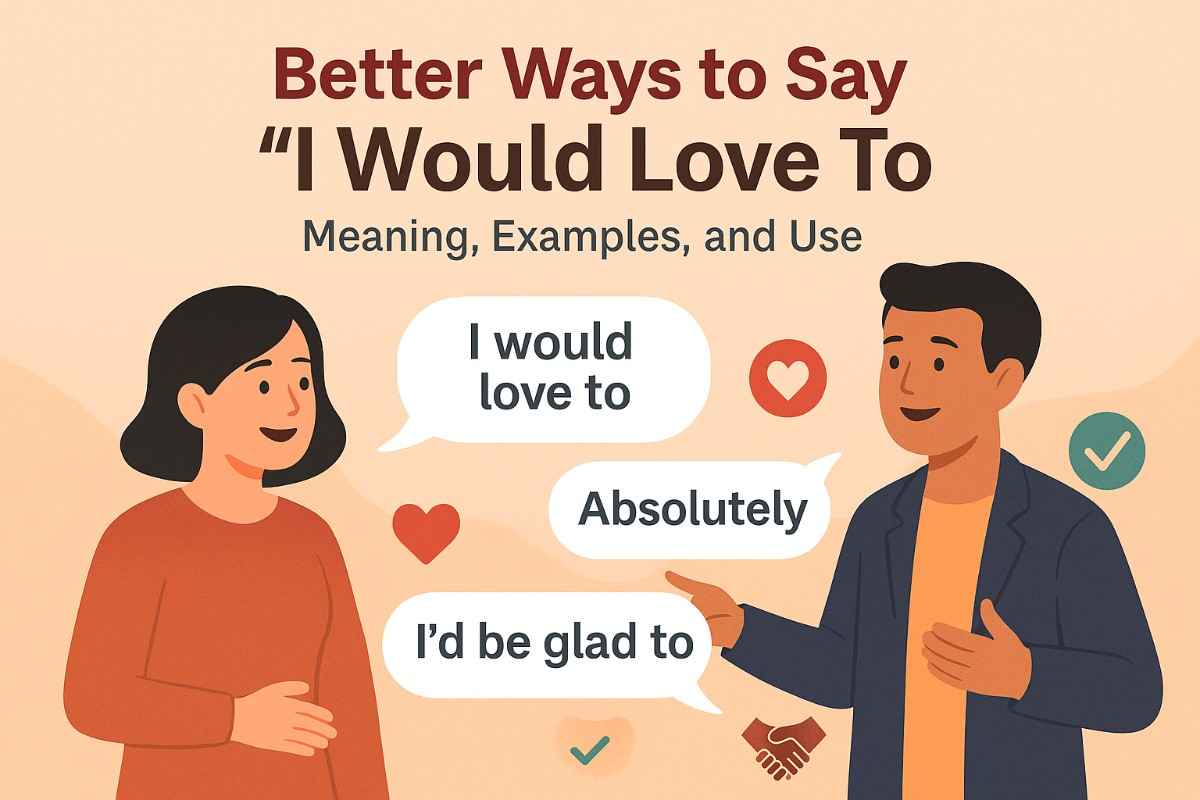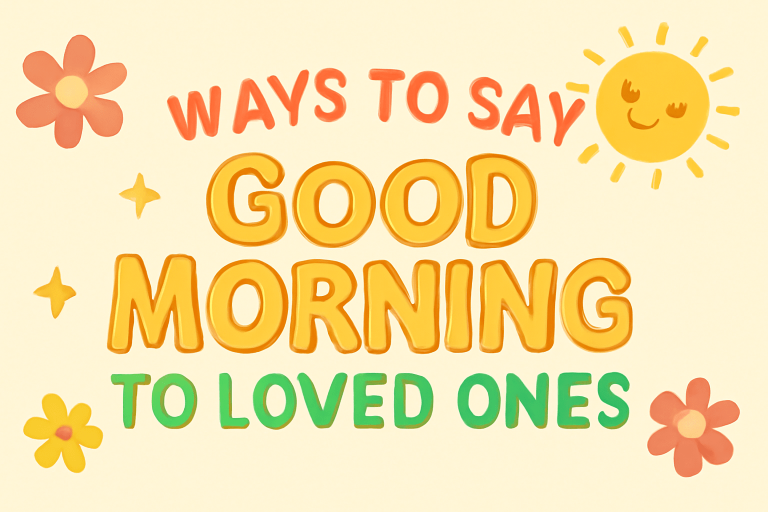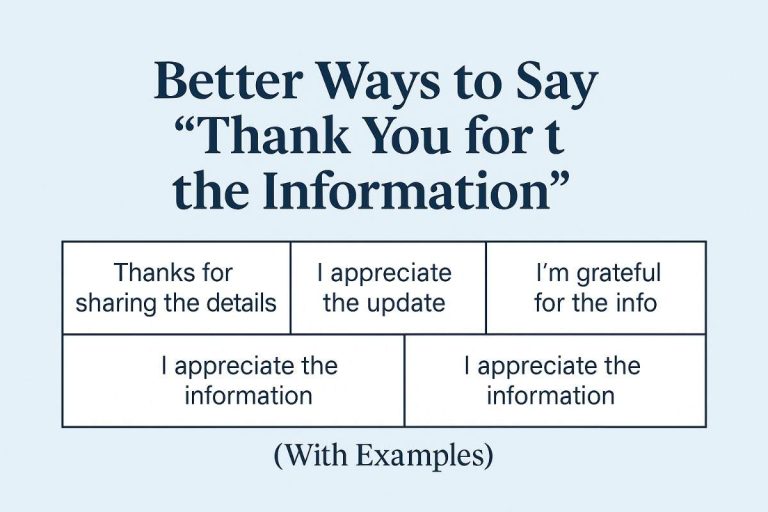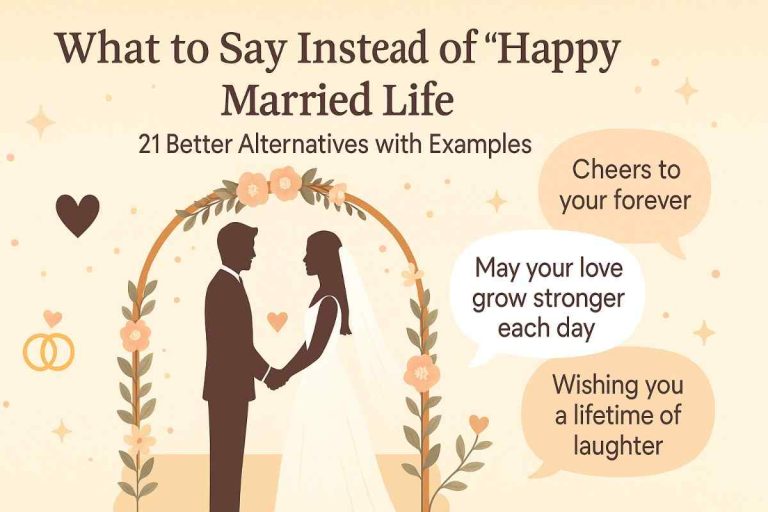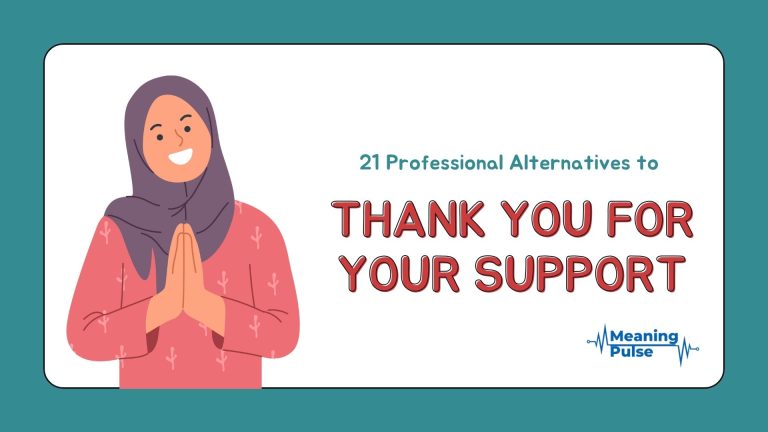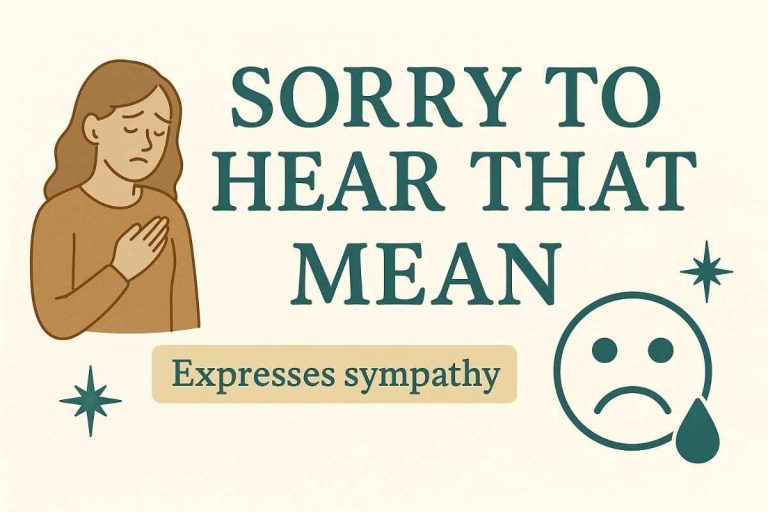Better Ways to Say “I Would Love To” (Meaning, Examples, and Use)
“I would love to.”
It’s one of those phrases you hear all the time. It sounds kind. Polite. Warm. It shows excitement. But like many common phrases, it can lose its punch if you use it too often.
Whether you’re replying to an invite or offering to help, there are other ways to express the same idea—some more casual, some more formal, and a few just plain fun.
In this guide, we’ll break it all down. What the phrase means. When to say it. When not to. And most of all, how to say it in fresh, simple ways.
What Does “I Would Love To” Mean?
At its core, “I would love to” is a positive response. It means you’re happy, excited, or willing to do something.
It can mean:
- You’re eager to join
- You agree with joy
- You’re showing politeness with emotion
But it’s not always super serious. Sometimes people say it just to be nice.
When and Where to Use “I Would Love To”
You’ll hear this phrase in many settings—both formal and casual.
Use it when:
- Someone invites you to an event
- You’re accepting a task
- You’re showing willingness with warmth
Examples:
- “Would you like to come to dinner?”
→ “I would love to.” - “Can you help us on this project?”
→ “I would love to.”
Where it fits:
- Emails and messages
- Spoken replies
- Text conversations
- Networking or work chats
But watch the tone. Sometimes it sounds too strong or too sweet—especially if you’re not that excited.

Explore This Topic: What to Say Instead of “Stay Tuned” (With 24 Professional Alternatives)
18 Synonyms to Say “I Would Love To”
Sometimes a fresh phrase says the same thing but feels more natural. Here are 18 better or alternative ways to say “I would love to,” broken down clearly.
1. Count me in
- Meaning: I’m joining or agreeing.
- Explanation: Casual and confident.
- Example: “We’re doing lunch Friday.”
→ “Count me in!” - Best Use: Group invites or friendly chats.
2. I’m in
- Meaning: I agree or accept.
- Explanation: Short and cool.
- Example: “Wanna go hiking this weekend?”
→ “I’m in.” - Best Use: Informal messages or quick replies.
3. Sounds great
- Meaning: That idea works for me.
- Explanation: Shows interest without being too eager.
- Example: “We’re planning a team brunch.”
→ “Sounds great!” - Best Use: Work or casual plans.
4. Absolutely
- Meaning: Strong yes.
- Explanation: Confirms with energy.
- Example: “Would you be free to join?”
→ “Absolutely.” - Best Use: Emails, meetings, or chats.
5. Sure thing
- Meaning: Agreeing happily.
- Explanation: Simple and friendly.
- Example: “Want to come with us?”
→ “Sure thing.” - Best Use: Texts and casual settings.
6. I’m happy to
- Meaning: Willing and kind.
- Explanation: Soft tone, polite.
- Example: “Could you help us out?”
→ “I’m happy to.” - Best Use: Helpful replies in work or personal tasks.
7. Gladly
- Meaning: You’ll do it with joy.
- Explanation: Feels a bit formal but sweet.
- Example: “Would you like to help?”
→ “Gladly.” - Best Use: Nice for written replies.
8. Of course
- Meaning: Yes, no hesitation.
- Explanation: Assures the other person.
- Example: “Can you be there?”
→ “Of course.” - Best Use: Email, calls, or close friends.
9. I’m all for it
- Meaning: You support the idea fully.
- Explanation: Shows excitement.
- Example: “Thinking of hosting a movie night.”
→ “I’m all for it!” - Best Use: Friendly talks or creative planning.
10. Sounds fun
- Meaning: You’re open and interested.
- Explanation: Adds energy without overdoing it.
- Example: “Want to try this new place?”
→ “Sounds fun!” - Best Use: Social invites.
11. Can’t wait
- Meaning: You’re excited.
- Explanation: Strong tone, shows emotion.
- Example: “Let’s go to the concert!”
→ “Can’t wait.” - Best Use: Enthusiastic plans.
12. I’m down
- Meaning: Yes, I’m game.
- Explanation: Very casual, trendy.
- Example: “Game night at 7?”
→ “I’m down.” - Best Use: Close friends, younger tone.
13. You bet
- Meaning: Yes, absolutely.
- Explanation: Slightly playful.
- Example: “Would you join us?”
→ “You bet.” - Best Use: Informal, upbeat talks.
14. I’m up for it
- Meaning: Willing to do it.
- Explanation: Shows openness.
- Example: “We might do karaoke.”
→ “I’m up for it.” - Best Use: Light, casual responses.
15. Sounds like a plan
- Meaning: That works for me.
- Explanation: Easygoing and smooth.
- Example: “Let’s meet after work.”
→ “Sounds like a plan.” - Best Use: Wrapping up informal invites.
16. Let’s do it
- Meaning: Agreeing with action.
- Explanation: Fun and direct.
- Example: “Lunch break escape room?”
→ “Let’s do it!” - Best Use: Friends, coworkers.
17. I’m on board
- Meaning: I agree and support the idea.
- Explanation: Slightly formal.
- Example: “Thinking of switching platforms.”
→ “I’m on board.” - Best Use: Work emails or team talks.
18. Sign me up
- Meaning: I want in.
- Explanation: Simple and eager.
- Example: “We’re volunteering next weekend.”
→ “Sign me up.” - Best Use: Group events, planning.
How to Respond to “I Would Love To”
If someone says “I would love to,” how should you reply? It depends on the setting and tone.
Friendly replies:
- “Awesome! Can’t wait.”
- “Glad to hear that!”
- “Great—let’s make it happen.”
Work replies:
- “Thanks—looking forward to it.”
- “Glad you’re on board.”
- “Perfect. I’ll send the details.”
The key is to match the tone—warm if they’re warm, formal if they’re formal.
Difference Between “I Would Love To” and “I Love To”
People often mix these up. They sound similar but mean different things.
“I would love to”
- Future or conditional.
- Means you’re ready to do something if invited or allowed.
- Example: “I would love to join you for dinner.”
“I love to”
- Ongoing or general.
- Means you enjoy doing it often.
- Example: “I love to cook.”
In short, “I would love to” is about the future. “I love to” is about what you enjoy right now or always.
Conclusion
“I would love to” is a kind phrase. But using it too much can sound fake or repetitive. There are many better ways to say yes, show excitement, or respond with care.
Whether it’s “Count me in” or “Sounds great,” picking the right phrase makes your message feel real—and helps others feel heard.
So next time someone offers something fun or meaningful? Use your words wisely. Keep it simple, honest, and fresh.

